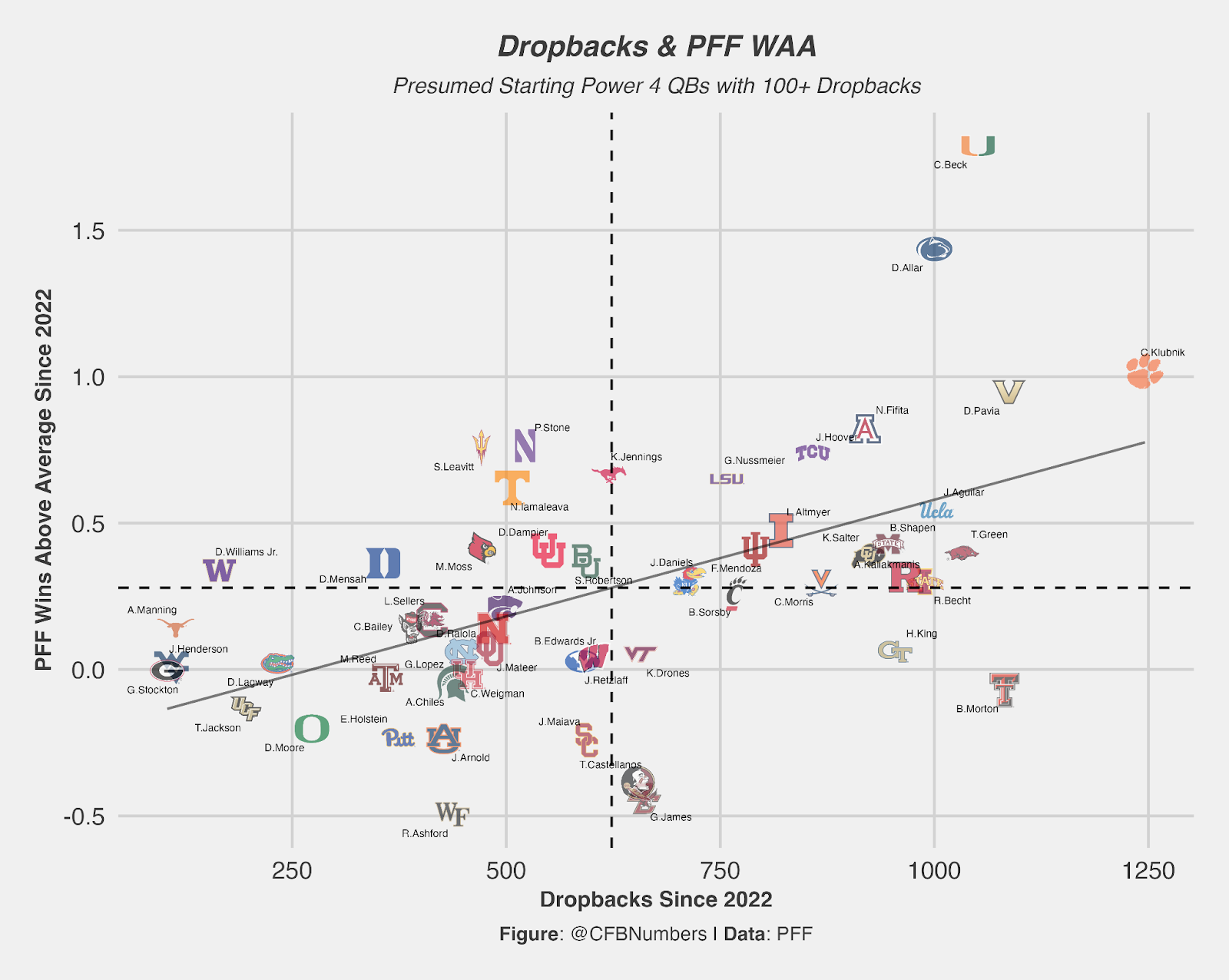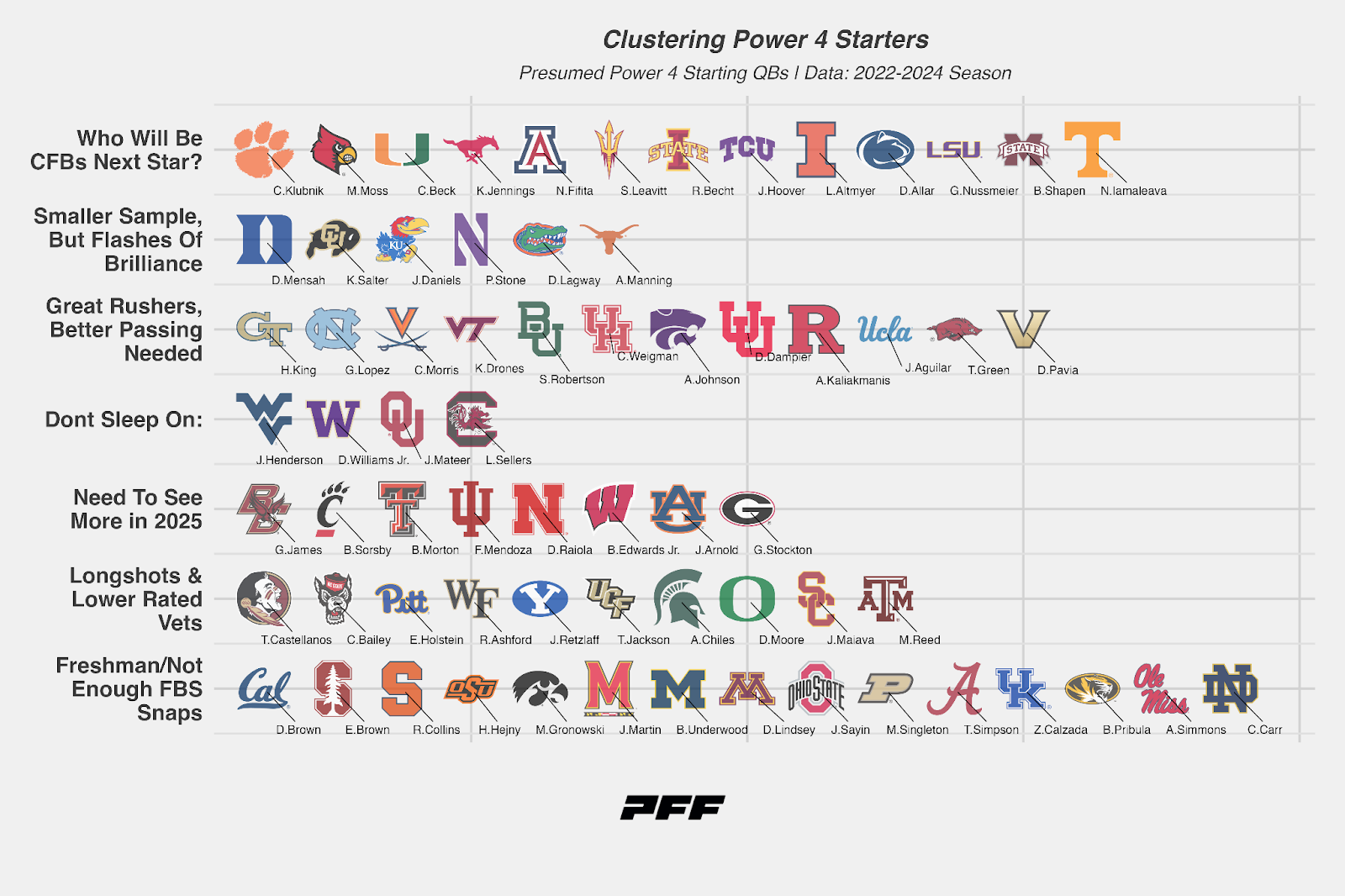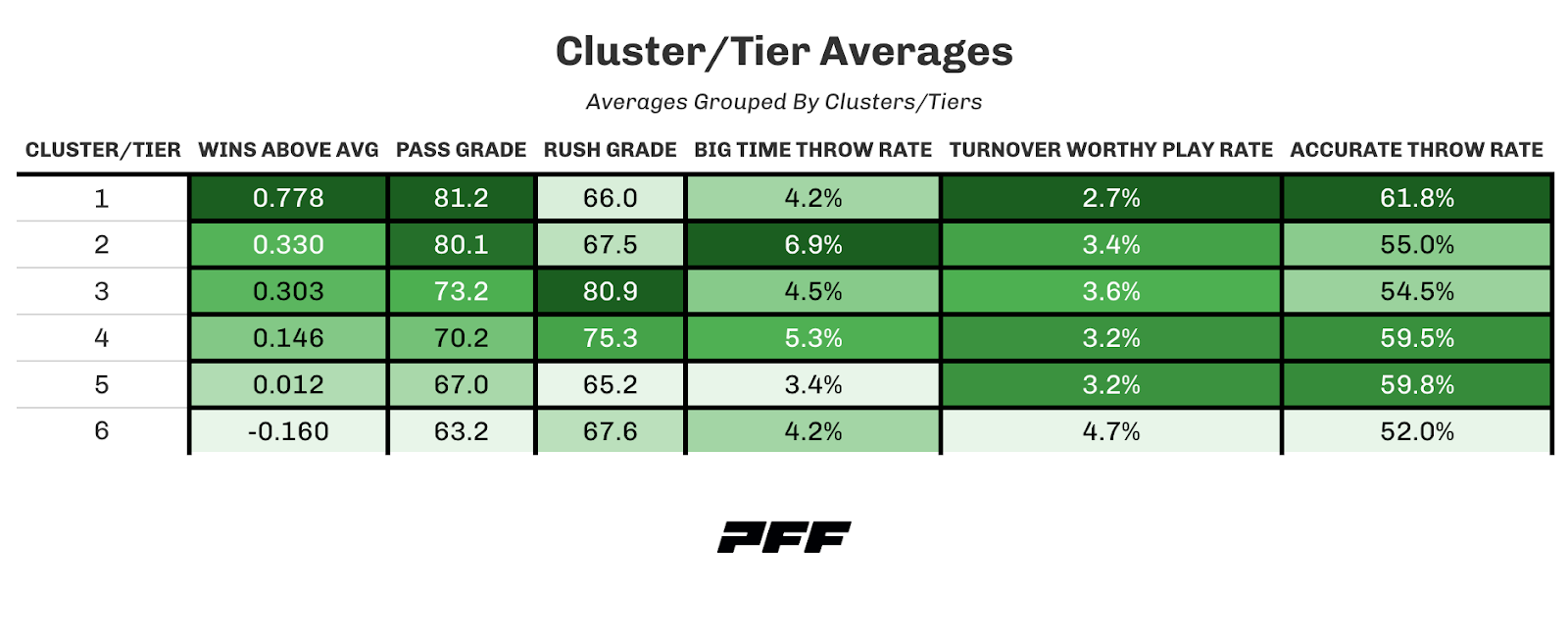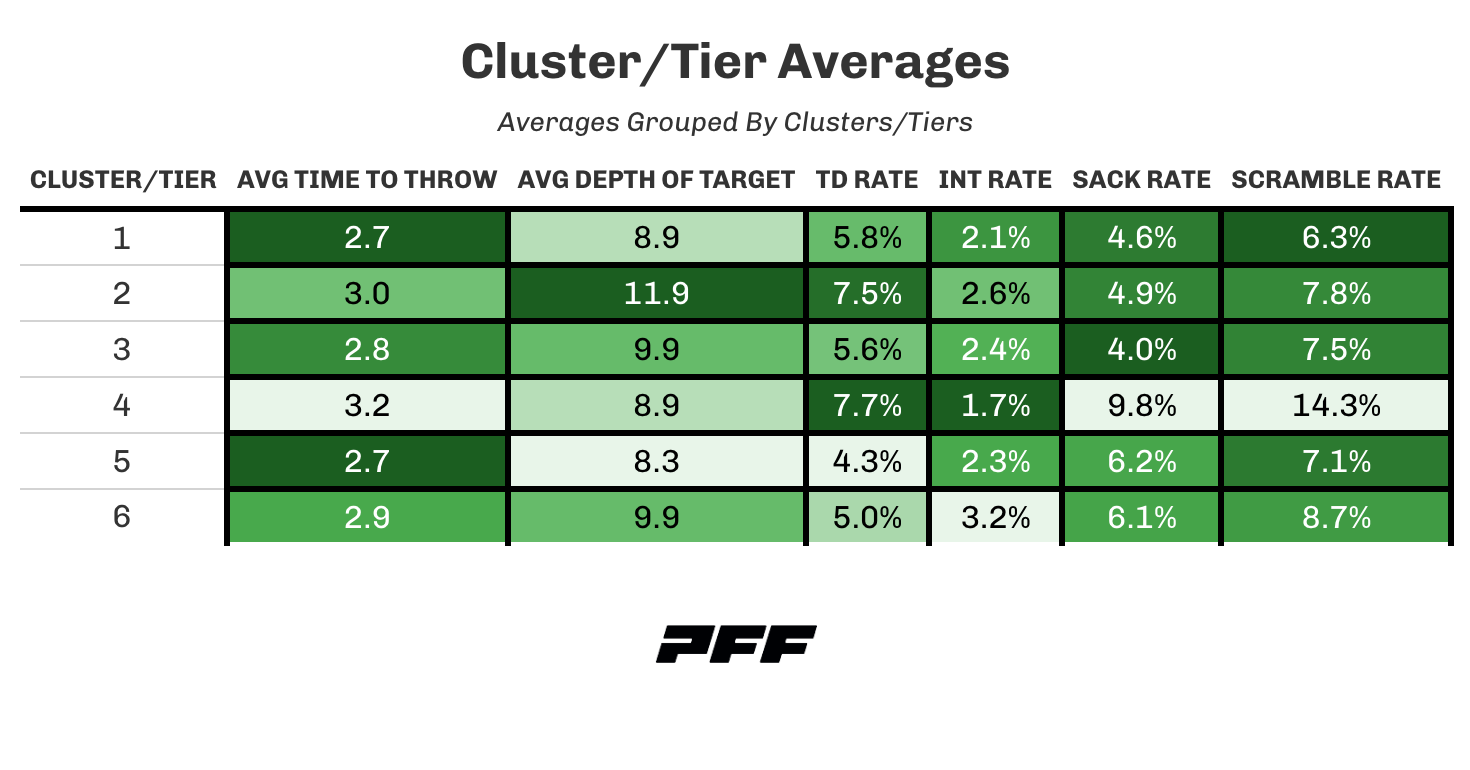Clustering the Power Four: An analytical look at college football’s 2025 starting quarterbacks

2WA2RCT ATLANTA, GA ? DECEMBER 30: Penn State quarterback Drew Allar (15) reacts during the Chick-fil-A Peach Bowl game between the Ole Miss Rebels and the Penn State Nittany Lions on December 30th, 2023 at Mercedes-Benz Stadium in Atlanta, GA. (Photo by Rich von Biberstein/Icon Sportswire) (Icon Sportswire via AP Images)
By
Jason DeLoach
- Clustering reveals tiers across 2025 Power Four quarterbacks: By grouping QBs based on key performance metrics, we gain a clearer picture of where each team’s starter stands heading into the season.
- Young passers headline college football’s biggest question marks: With 14 teams breaking in unproven quarterbacks, this year’s landscape offers no shortage of breakout candidates and unknowns.
- Subscribe to PFF+: Get access to player grades, PFF Premium Stats, fantasy football rankings, all of the PFF fantasy draft research tools and more!
Estimated Reading Time: 4 minutes

The quarterback position remains the most pivotal in college football. A standout QB can elevate a program to national prominence, while instability at the position can trigger sweeping changes across a coaching staff.
As we head into the summer, it’s time to examine the projected starting quarterbacks across the Power Four conferences. With PFF’s extensive data and quarterback metrics, we can go beyond surface-level analysis. And to simplify and sharpen our evaluation, we can use a clustering algorithm to group quarterbacks with similar profiles, making it easier to assess each team’s outlook heading into the 2025 season.
The clustering algorithm draws from PFF’s comprehensive grading and charting data dating back to the 2022 season. Key inputs include each quarterback’s PFF passing and rushing grades, as well as their percentage of charted accurate throws — a measure that accounts for passes delivered in stride, within the receiver’s frame or placed away from coverage. We’ve also factored in PFF Wins Above Average (WAA), which offers a balanced view of both volume and overall value contributed to a program.

With all variables collected, we’ll feed them into a K-Means clustering algorithm to identify groups of quarterbacks who share similar statistical profiles across the selected metrics.

To enhance readability, I’ve ordered the tiers by each group’s average PFF Wins Above Average. I’ve also added a separate tier for quarterbacks who haven’t logged at least 100 FBS snaps since 2022, including true freshmen expected to start immediately. This is the largest cluster, adding an extra layer of intrigue heading into the season, as 14 Power Four teams will start relatively untested signal-callers. The lone exception is Kentucky’s Zach Calzada, who returns to the FBS level after spending the past two seasons at FCS Incarnate Word.
The first tier highlights a sizable group of quarterbacks who haven’t yet separated themselves but have the tools to do so. While early projections suggest the 2026 quarterback draft class may outshine 2025, several of these players still have something to prove. Can Drew Allar take the next step and push Penn State into national title contention? Will Cade Klubnik build on his strong second half of 2024 and continue his upward trajectory? This tier is filled with QBs on the cusp, each with a chance to break through and elevate both their stock and their programs.

Grouping averages by cluster allows us to identify where certain tiers excel and where common weaknesses may lie. Cluster 3, which includes quarterbacks like North Carolina’s Gio Lopez and Utah transfer Devon Dampier, features QBs who have graded exceptionally well as runners but have room to grow as passers.
Since 2022, Lopez and Dampier own the top two rushing grades among projected starters with at least 100 dropbacks — Lopez at 90.5 and Dampier at 89.3. However, their passing grades tell a different story: Lopez’s 72.0 ranks 30th, while Dampier’s 77.6 comes in at 16th. The upside is clear, but further development in the passing game will be key for this group’s success in 2025.

Tiers 5 and 6 aren’t necessarily cause for concern, especially for younger talents like incoming sophomore Dylan Raiola. Within his cluster, key metrics such as touchdown rate, big-time throw rate and average depth of target all trail the higher-performing tiers.
Raiola’s 3.1% touchdown rate ranks last among the 53 quarterbacks with 100-plus dropbacks, and his 8.0-yard average depth of target ranks 49th. His 3.8% big-time throw rate sits 39th in that group. If he can push the ball downfield more consistently and increase his efficiency on high-impact throws, it will signal meaningful progress in his development.
Overall, clustering these metrics provides a valuable way to synthesize complex data into digestible, visual insights. While another full season of play could significantly reshuffle these groups, this analysis offers a strong early framework for understanding the quarterback landscape heading into the 2025 season.




